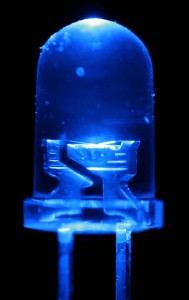October 7, 2014
 This year, three researches from Japan and the U.S. were deemed to be no dim bulbs in the science and research community. Professors Isamu Asaki, Hiroshi Amano and Shuji Nakamura were nominated this week for the 2014 Nobel Prize for Physics for the invention of efficient blue light-emitting diodes (LEDs).
This year, three researches from Japan and the U.S. were deemed to be no dim bulbs in the science and research community. Professors Isamu Asaki, Hiroshi Amano and Shuji Nakamura were nominated this week for the 2014 Nobel Prize for Physics for the invention of efficient blue light-emitting diodes (LEDs).
This breakthrough not only brings a whole new light to the bulb and smartphone industry, but has an incredible impact on global energy use.
In 2012, Americans used about 461 kilowatthours (kWh) for lighting alone, according a U.S. Energy Information Administration lighting report. This represents about 12-percent of all energy used in the states that year.
Globally speaking, about 19 percent of the energy used on this planet is for the purpose of lighting, according to the IEA.
About 1 900 million tons of carbon dioxide is emitted each year in the process of generating the energy used for global lighting purposes. According to the IEA, this is equivalent to 70-percent of the emissions from the world’s light passenger vehicles.
The LED bulb, as designed by Asaki, Amano and Nakamura, represents an opportunity to reduce this energy use around the globe. LED bulbs can use up to 80 percent less energy than traditional light bulbs.
Red and green LEDs have been around for many years, but blue LEDs have long since been a struggle for scientists in both academia and industry. According to the BBC, the trio had made the first blue LEDs in the early 1990s and have since enabled a new generation of “bright, energy-efficient white lamps as well as color LED screens.”
The improvement of the blue LEDs will advance the lights and screens of smartphones, but also improve traditional incandescent and florescent lamps. The blue LEDs are able to convert electricity directly into photons of light, instead of using the inefficient mixture of heat and light generated inside traditional incandescent bulbs. In the award citation, the Nobel committee declared: “incandescent light bulbs lit the 20th Century; the 21st Century will be lit by LED lamps.”
The BBC also reported that the Nobel jury “emphasized the usefulness of the invention, adding that the Nobel prizes were established to recognize developments that delivered ‘the greatest benefit to mankind.’” The Nobel Prize not only commemorates the success of the blue LED invention, but also enables us all to think about how innovative energy technology has a huge impact on shaping our world. It is truly momentous for a light-inspired, energy-efficient technology to be recognized as a fundamental need for our future.
Asaki, Amano and Nakamura were named at a press conference in Sweden on Oct. 7 and join a prestigious list of 196 other physics laureates recognized since 1901.
Written by Gabrielle Olson and Sarah Mason, ASU LightWorks
Additional Information:
http://www.nobelprize.org/nobel_prizes/physics/laureates/2014/press.html
http://www.bbc.com/news/science-environment-29518521
http://www.cnn.com/2014/10/07/world/europe/nobel-prize-physics/index.html
http://www.theguardian.com/science/live/2014/oct/07/nobel-prize-physics-2014-stockholm-live

